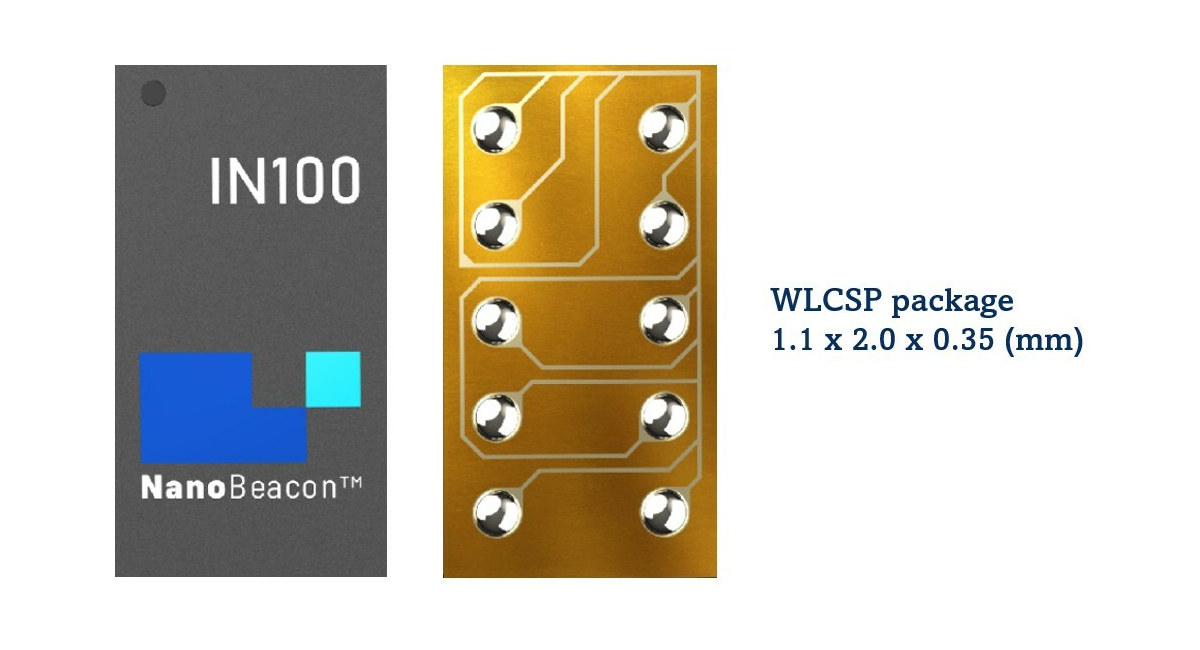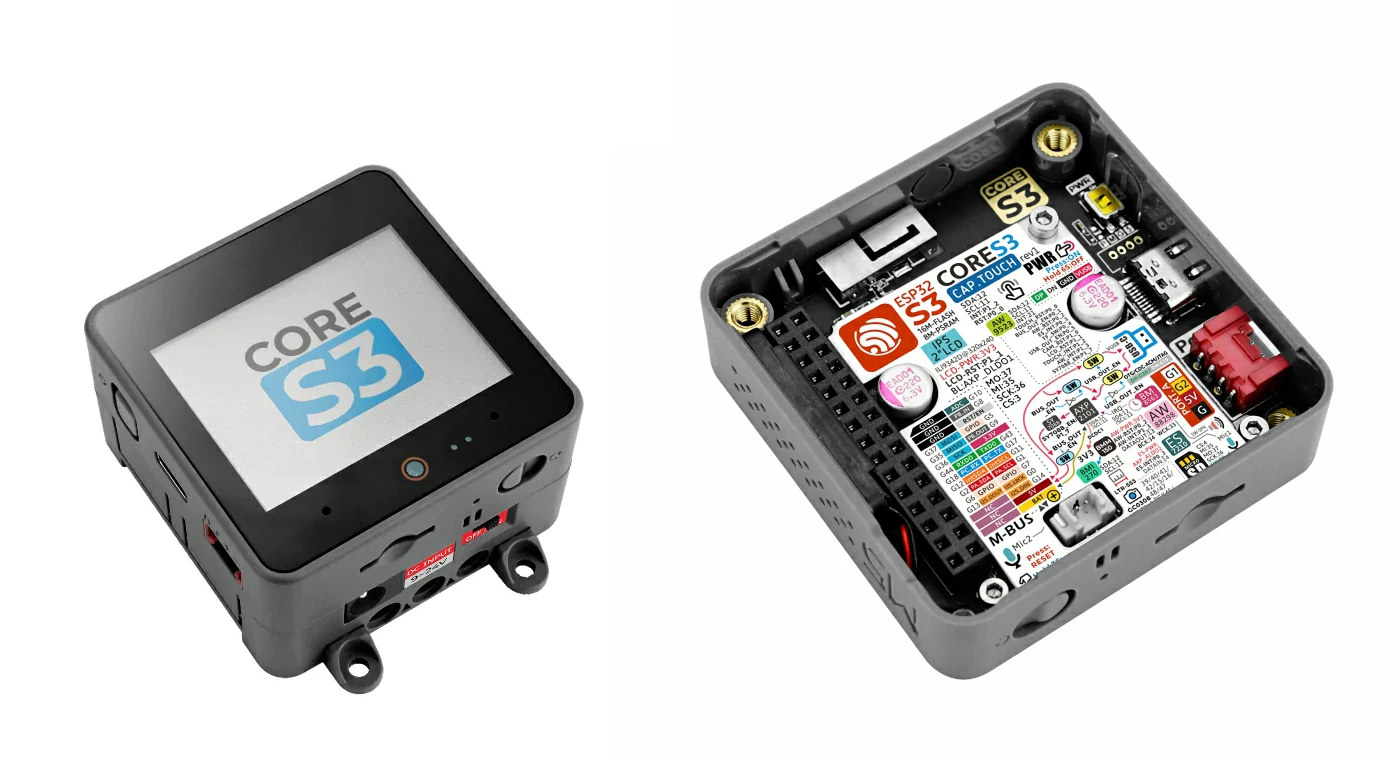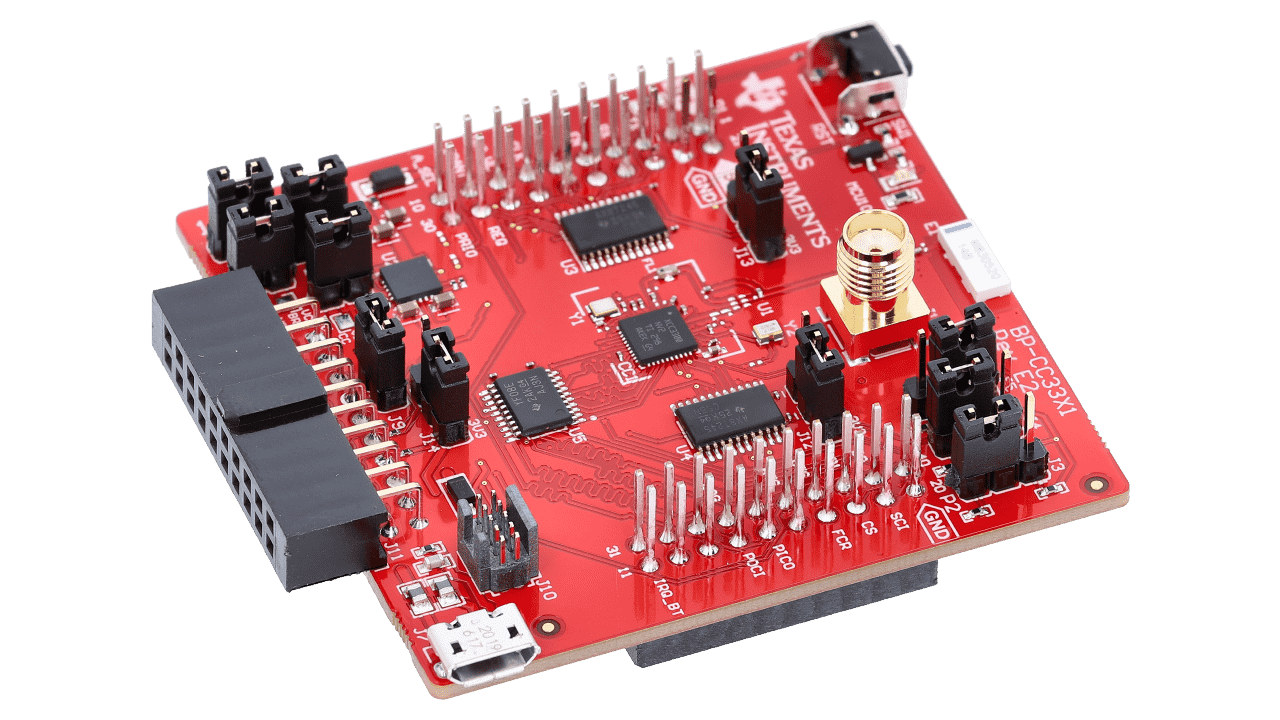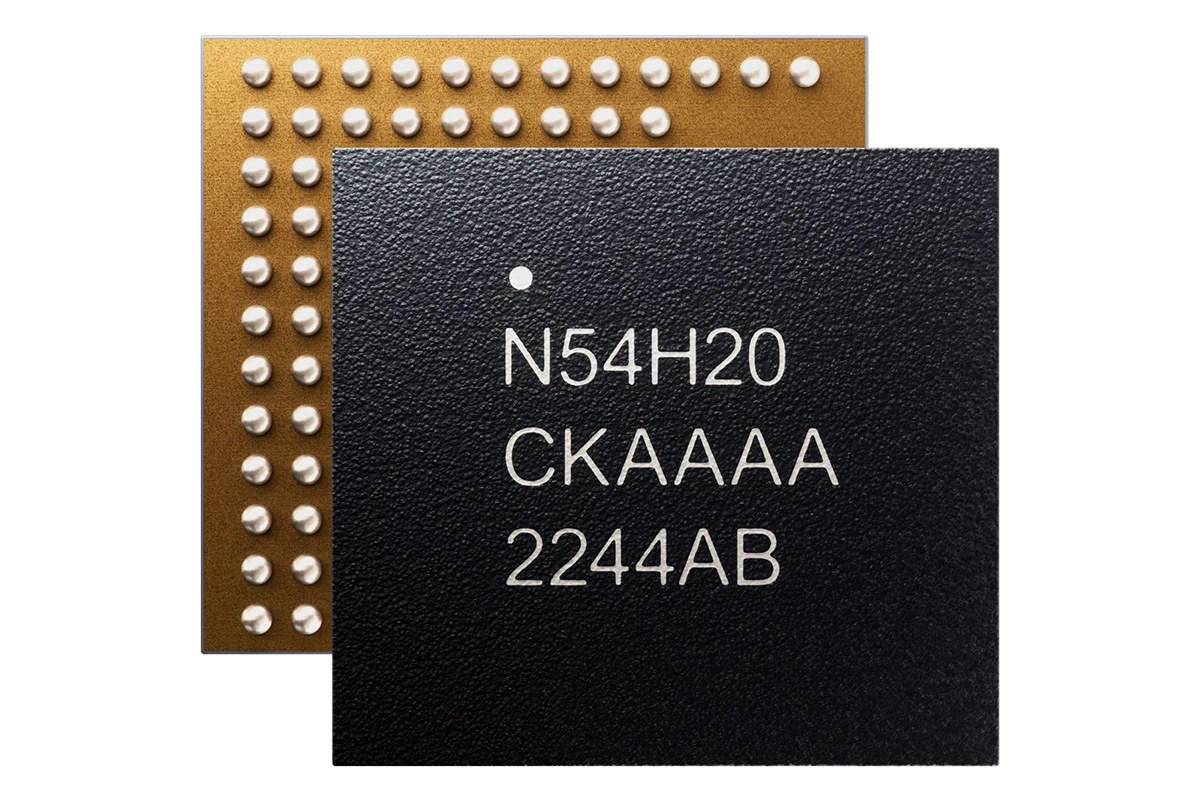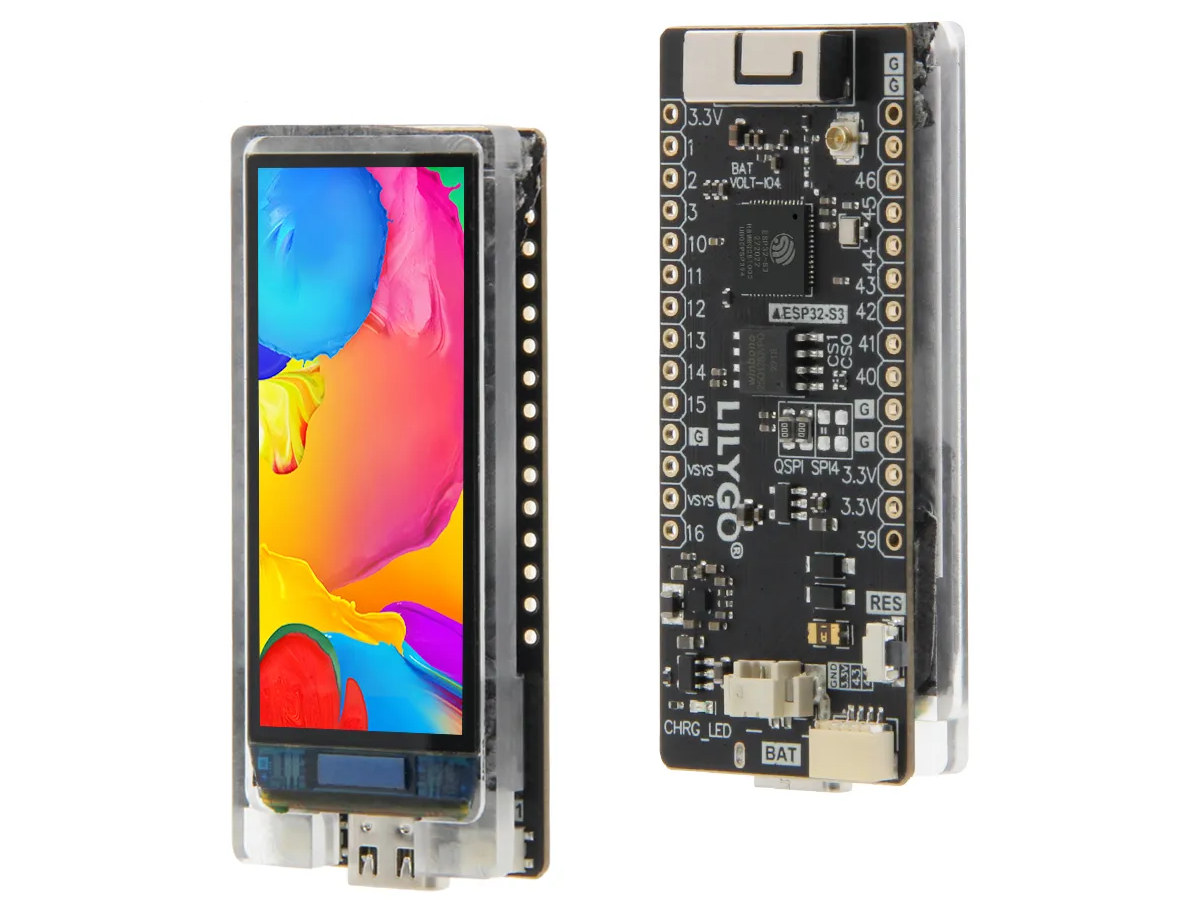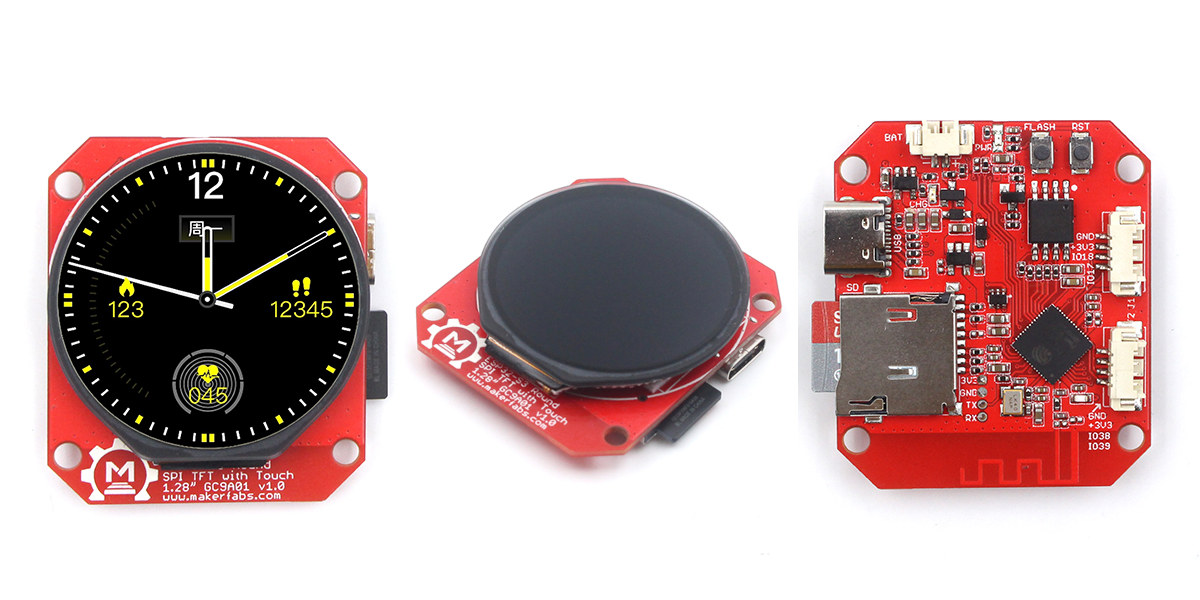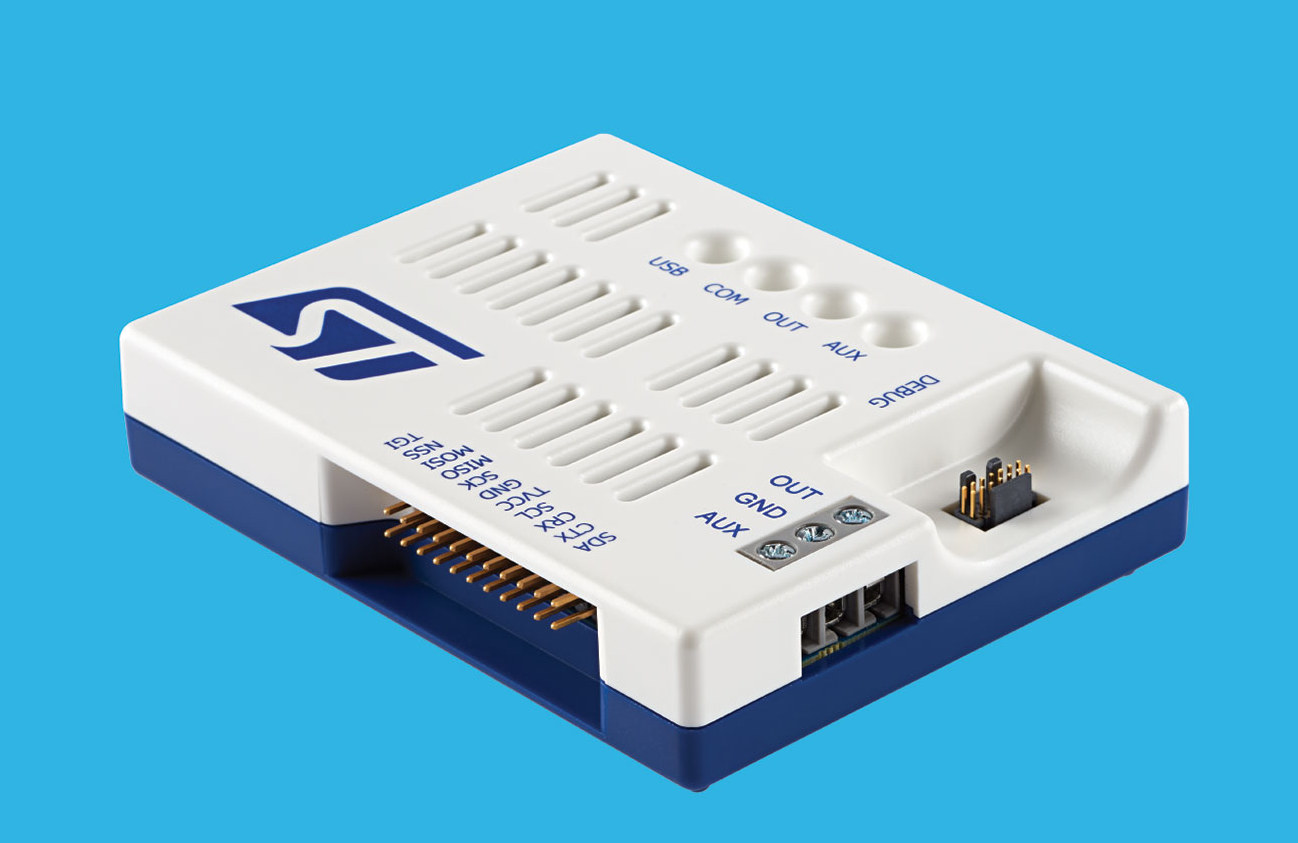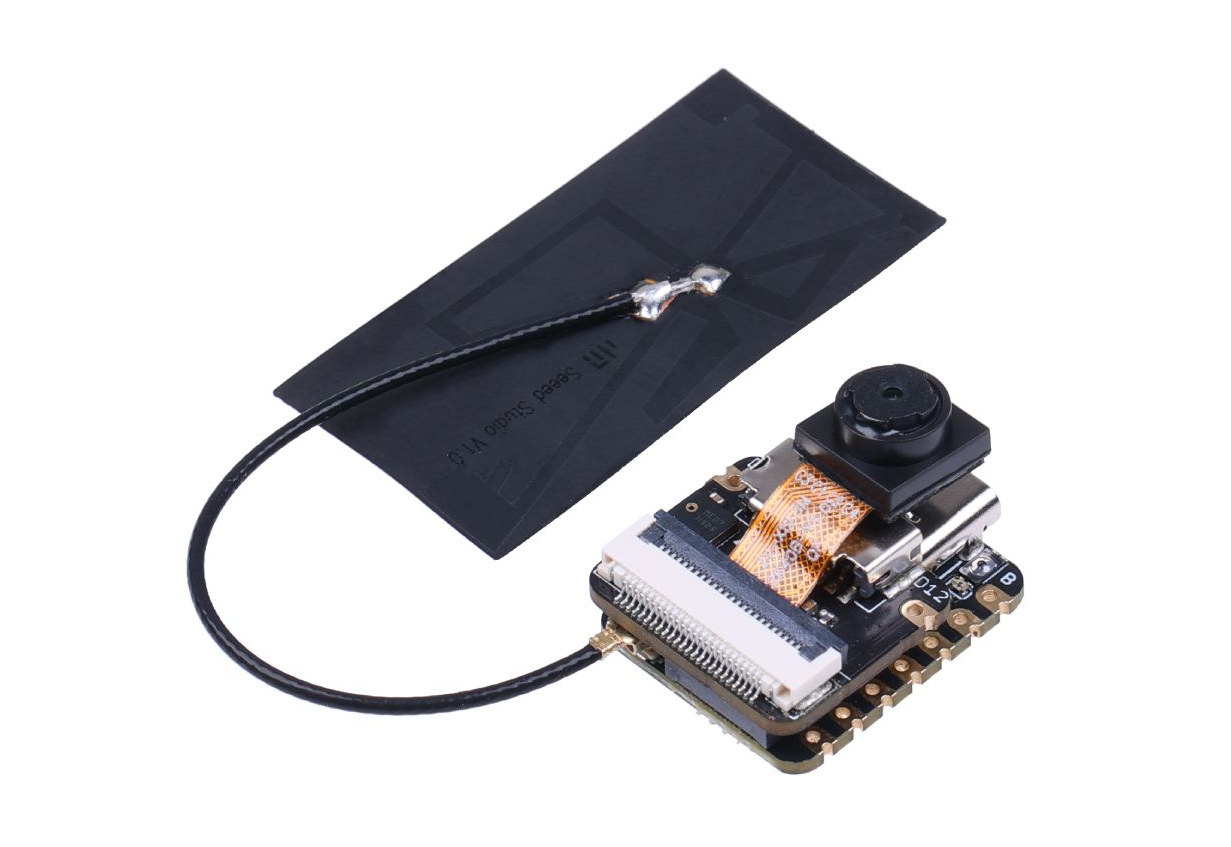InPlay has just announced a Wafer Level Chip Scale Package (WLCSP) for its NanoBeacon SoC IN100, making it the world’s smallest Bluetooth System-on-a-Chip (SoC) at just 2.0 x 1.1 x 0.35mm. The NanoBeacon IN100 is not new per se, and we covered the still tiny Bluetooth SoC when writing about Sparkfun NanoBeacon Bluetooth 5.3 module based on the DFN8 package measuring 2.5×2.5mm. The highlights include its low-code/no-code interface and an ultra-low power consumption of below 1 uW. InPlay NanoBeacon SoC IN100 specifications: Memory – 4 KB SRAM + 4 Kbit OTP memory Bluetooth 5.3 compliant Beacon Modes: Proprietary, BT, Google Eddystone, and Apple iBeacon compliant 2.4GHz RF frequency band, MedRadio band (2.36GHz) Programming-free and firmware-less design Long-range transmission: up to several hundred meters Security Authentication of beacon ID Privacy of advertising payload Supply voltage range – 1.1V ~ 3.6V (Single 1.5V coin battery support) Power consumption Sub-uW power consumption for […]
$60 M5Stack CoreS3 ESP32-S3 IoT controller comes with 2-inch display, VGA camera, multiple sensors
M5Stack CoreS3 is a battery-powered ESP32-S3 IoT controller with WiFi and Bluetooth connectivity, a 2-inch touchscreen display, a 0.3MP camera, a microSD card slot for storage, several sensors, plenty of I/Os, a USB Type-C OTG port, as well as a 9V to 24V DC input port. That’s the second ESP32-S3 IoT controller from M5Stack we’ve seen this year, as the CoreS3 follows the smaller M5Stack AtomS3 with a 0.85-inch display, only a few I/Os, and fewer features overall although it does come with an IR transmitter that’s missing from the larger CoreS3. M5Stack CoreS3 specifications: Wireless MCU – Espressif Systems ESP32-S3FN16R8 dual-core 32-bit Xtensa LX7 microcontroller with AI vector instructions up to 240MHz, RISC-V ULP co-processor, 512KB SRAM, 2.4GHz WiFi 4 (802.11b/g/n), Bluetooth 5.0 BLE + Mesh, 16MB flash, 8MB PSRAM Antenna – Internal “3D” antenna Storage – MicroSD card slot Display – 2-inch display with 320×240 resolution via ILI9342C […]
TI launches Simplelink CC3300/CC3301 WiFi 6, Bluetooth 5.3 LE companion IC for IoT applications
Texas Instruments has unveiled the SimpleLink CC33xx family of Wi-Fi 6 companion IC with optional Bluetooth 5.3 Low Energy designed to be connected to a microcontroller (MCU) or a microprocessor (MPU) for secure and power-efficient IoT devices, The SimpleLink CC3000 supports 2.4 GHz WiFi 6, and interfaces over SDIO, SPI, and/or UART to the host system, while the SimpleLink CC3301 also adds support for Bluetooth 5.3 LE. Both chips can operate in high-temperature environments up to 105ºC. Texas Instruments CC3300/CC3301 specifications: Wireless 2.4 GHz WiFi 6 (802.11ax) up to 50 Mbps; Support for TWT and OFDMA, multirole (Access Point and Station) CC3301 only – Bluetooth 5.3 Low Energy up to 2 Mbps WiFi and Bluetooth COEX Host interface – 4-bit SDIO or SPI, and UART to external MCU or MPU Security – FW authentication and anti-rollback protection, WPA2/WPA3, Secured host interface Pacakge – 40-pin QFN package (5×5 mm) Temperature range […]
Nordic Semi nRF54H20 Cortex-M33 + RISC-V wireless SoC supports Bluetooth 5.4, LE Audio, Bluetooth mesh, Thread, Matter, and more
Nordic Semi nRF54H20 is a 320 MHz multiprotocol wireless SoC with several Arm Cortex-M33 and RISC-V cores, support for Bluetooth 5.4 and greater with features like LE Audio and Bluetooth mesh, as well as Thread, Matter, and so on. It is the first part of the fourth generation nRF54 family manufactured with a 22nm process, and its application processor doubles the processing power (2x CoreMark) of the Arm Cortex-M33 application core in the nRF5340 SoC and embeds up to 2MB flash, 1MB SRAM. nRF54H20 preliminary specifications and highlights: CPU Application core – Arm Cortex-M33 @ up to 320 MHz with 2 MB Flash + 1MB SRAM Network core – Arm Cortex-M33 Several RISC-V cores (for low power?) Wireless Bluetooth 5.4 LE with direction-finding, Bluetooth mesh, LE audio, etc… 802.15.4 radio for Thread, Matter -100 dBm RX sensitivity @ 1 Mbps for Bluetooth LE Up to 10 dBm TX power New […]
T-Display-S3 AMOLED – An ESP32-S3 board with a 1.9-inch AMOLED Display
There are plenty of ESP32 series boards with display usually TFT or E-Ink, but I don’t think I’ve ever seen one with an AMOLED display and that’s what Lilygo is offering with the “T-Display-S3 AMOLED” board equipped with an ESP32-S3 WiFi and Bluetooth microcontroller and a 1.9-inch AMOLED display. The new board is almost the same as the T-Display-S3 board introduced last year, except for a display with higher resolution, more vibrant colors, and a wider viewing angle, plus a 3D antenna, and a few extra I/Os. T-Display-S3 AMOLED specifications: Wireless MCU – Espressif Systems ESP32-S3R8 dual-core Tensilica LX7 @ up to 240 MHz with vector instructions for AI acceleration, 512KB RAM, 8MB PSRAM, wireless connectivity Storage – 16MB flash Connectivity via ESP32-S3 2.4 GHz 802.11 b/g/n Wi-Fi 4 with 40 MHz bandwidth support Bluetooth Low Energy (BLE) 5.0 connectivity with long-range support, up to 2Mbps data rate. 3D antenna […]
ESP32-S3 based 1.28-inch round touchscreen display supports Arduino programming
Makerfabs “ESP32-S3 Round SPI TFT with Touch 1.28″ is a small ESP32-S3 with a 1.28-inch round color touchscreen display, a microSD card, support for USB and battery power, and two “Mabee” extension connectors. The board joins other ESP32-S3 round display boards such as the Lilygo T-RGB board or Seeed Studio’s Round Display for XIAO, but with a thinner design, and a square PCB with trimmed corners instead of a round PCB like the other two. ESP32-S3 Round SPI TFT with Touch 1.28″ (E32S3128GC) specifications: Wireless MCU – Espressif Systems ESP32-S3R8 dual-core Tensilica LX7 microcontroller @ 240 MHz with vector extension, 512KB SRAM, 8MB PSRAM, Wi-Fi 4 & Bluetooth 5.0 dual-mode (Classic + BLE) connectivity Flash – 128 Mbit (16MB) W25Q128JV SPI flash, microSD card slot Display – 1.28-inch round LCD with 240×240 resolution (GC9A01 SPI driver), touchscreen controller (CST816S) USB – 1x USB Type-C port Expansion 1x 4-pin Mabee I2C […]
STMicro STLINK-V3PWR debugging & programming probe supports power measurement
STMicro STLINK-V3PWR is a new in-circuit debugging and programming probe made for STM32 microcontrollers and that is said to provide accurate power measurement. The probe is especially useful for battery power IoT and wireless applications and is able to measure current values from nanoamps up to ~500mA with up to ±0.5% accuracy. The STLINK-V3PWR can also power the target over a single USB cable up to 2A. STMicro STLINK-V3PWR key features and specifications: 1‑Quadrant source measurement unit: Programmable voltage source from 1.6 to 3.6 V Output current rating 500 mA with over-current protection (OCP) at 550 mA Programmable sampling rate from 1 SPS to 100 kSPS Dynamic measurement 100 nA to 550 mA current 160 nW to 1.65 W power measurements 50 kHz bandwidth 1.6 MHz acquisition / 2% accuracy Compatible with EEMBC ULPMark tests Auxiliary output voltage source from 1.6 to 3.6 V under up to 2 A (no current measurement, OCP at 2.5 A) Debugging of […]
XIAO ESP32S3 board gets some senses with a camera and microphone module, plus a round touchscreen display
Last week, we wrote about the new XIAO ESP32S3, a tiny ESP32-S3 board from Seeed Studio. The company has now launched the XIAO ESP32S3 Sense adding a camera and microphone module connected through a board-to-board connector, as well as the Round Display for XIAO that can help people easily create wearable devices with a touchscreen based on any board from the XIAO family. XIAO ESP32S3 Sense XIAO ESP32S2 Sense specifications: Wireless MCU – Espressif Systems ESP32-S3R8 dual-core Tensilica LX7 microcontroller @ 240 MHz with 512KB SRAM, 8MB PSRAM, Wi-Fi 4 & Bluetooth 5.0 dual-mode (Classic + BLE) connectivity Storage – 8MB SPI flash, microSD card slot Antenna – External u.FL antenna USB – USB Type-C port for power and programming Camera – OV2640 camera sensor up to 1600×1200 resolution Audio – Built-in digital microphone Expansion I/Os 2x 7-pin headers with 1x UART, 1x I2C, 1x SPI, 11x GPIO (PWM), 9x […]


